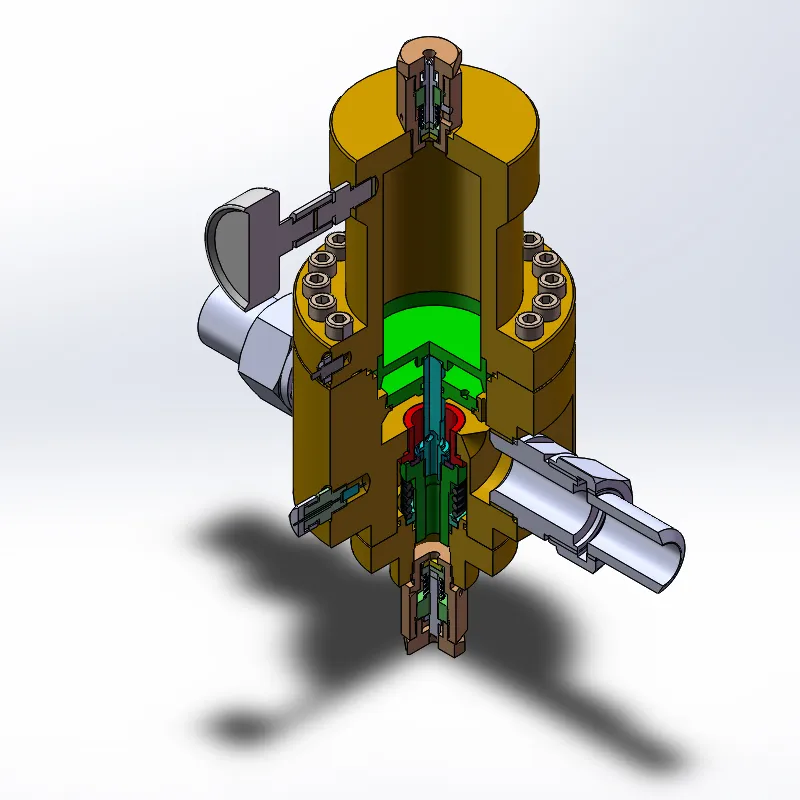
Dec . 19, 2024 11:57
Back to list
منظم الضغط
Understanding Pressure Regulators Essential Components for Various Applications
In many engineering and industrial processes, maintaining the correct pressure is crucial for efficiency and safety. This is where a pressure regulator, or منظم الضغط in Arabic, plays a vital role. A pressure regulator is a device that automatically maintains a consistent output pressure, regardless of fluctuations in the input pressure or downstream demand. This article delves into the importance, types, working principles, and applications of pressure regulators.
Importance of Pressure Regulators
Pressure regulators are essential for ensuring that systems operate within designated pressure ranges. They are used in numerous applications, from household gas systems to large-scale industrial operations. By controlling pressure, these devices prevent potential hazards such as explosions, leaks, or equipment failures, which can result from excessive pressure levels. Furthermore, they help in improving the efficiency of systems; for example, in gas supply systems, maintaining the right pressure can lead to optimal combustion and energy use.
Types of Pressure Regulators
Pressure regulators can be classified into several types based on their functionality and application. The most common types are
1. Single-Stage Regulators These are typically used for low-pressure applications. They reduce inlet pressure to a set outlet pressure in one step. They are simple and cost-effective but may not handle large pressure variations well.
2. Two-Stage Regulators These are more sophisticated and provide a more stable output pressure. They initially reduce the input pressure through a first stage and then further stabilize it in a second stage, making them suitable for applications where pressure consistency is critical.
3. Electronic Pressure Regulators With advancements in technology, electronic pressure regulators offer precise control of pressure via electronic feedback mechanisms. They are used in applications requiring high accuracy, such as in laboratory settings or high-tech manufacturing processes.
منظم الضغط

4. Pressure Relief Valves While not a regulator per se, these devices work in conjunction with pressure regulators to prevent overpressure conditions. They automatically release pressure when it exceeds a predetermined limit, ensuring safety in systems.
Working Principles of Pressure Regulators
The working principle of a pressure regulator is relatively straightforward. The regulator uses a spring-loaded mechanism in conjunction with a diaphragm. The inlet pressure pushes against the diaphragm, which moves in response to changes in pressure. As the diaphragm moves, it adjusts a valve that controls the flow of medium (gas or liquid) to the outlet. If the outlet pressure drops below the set point, the valve opens to allow more flow; if the pressure rises too high, it closes to restrict flow. This dynamic adjustment ensures that the output pressure remains stable, within desired limits.
Applications of Pressure Regulators
Pressure regulators are ubiquitous across various industries. In the oil and gas sector, they are indispensable for managing the pressure in pipelines and storage tanks. In healthcare, they are used in medical gas systems to provide patients with safe and consistent gas supply. Additionally, in the automotive industry, they help regulate fuel pressure in engines, contributing to improved performance and emissions control.
Other applications include water distribution systems, brewing industries, and HVAC systems, demonstrating the versatility and importance of pressure regulators in everyday life and industrial processes.
Conclusion
In summary, the pressure regulator, or منظم الضغط, is a vital component in ensuring safety, efficiency, and functionality across a wide range of applications. By understanding the types, working principles, and various applications of pressure regulators, industries can better implement these devices to optimize performance and ensure safety in their operations. As technology continues to evolve, pressure regulators will likely become even more sophisticated, enhancing their role in modern engineering and industrial practices.
Latest news
-
Safety Valve Spring-Loaded Design Overpressure ProtectionNewsJul.25,2025
-
Precision Voltage Regulator AC5 Accuracy Grade PerformanceNewsJul.25,2025
-
Natural Gas Pressure Regulating Skid Industrial Pipeline ApplicationsNewsJul.25,2025
-
Natural Gas Filter Stainless Steel Mesh Element DesignNewsJul.25,2025
-
Gas Pressure Regulator Valve Direct-Acting Spring-Loaded DesignNewsJul.25,2025
-
Decompression Equipment Multi-Stage Heat Exchange System DesignNewsJul.25,2025

